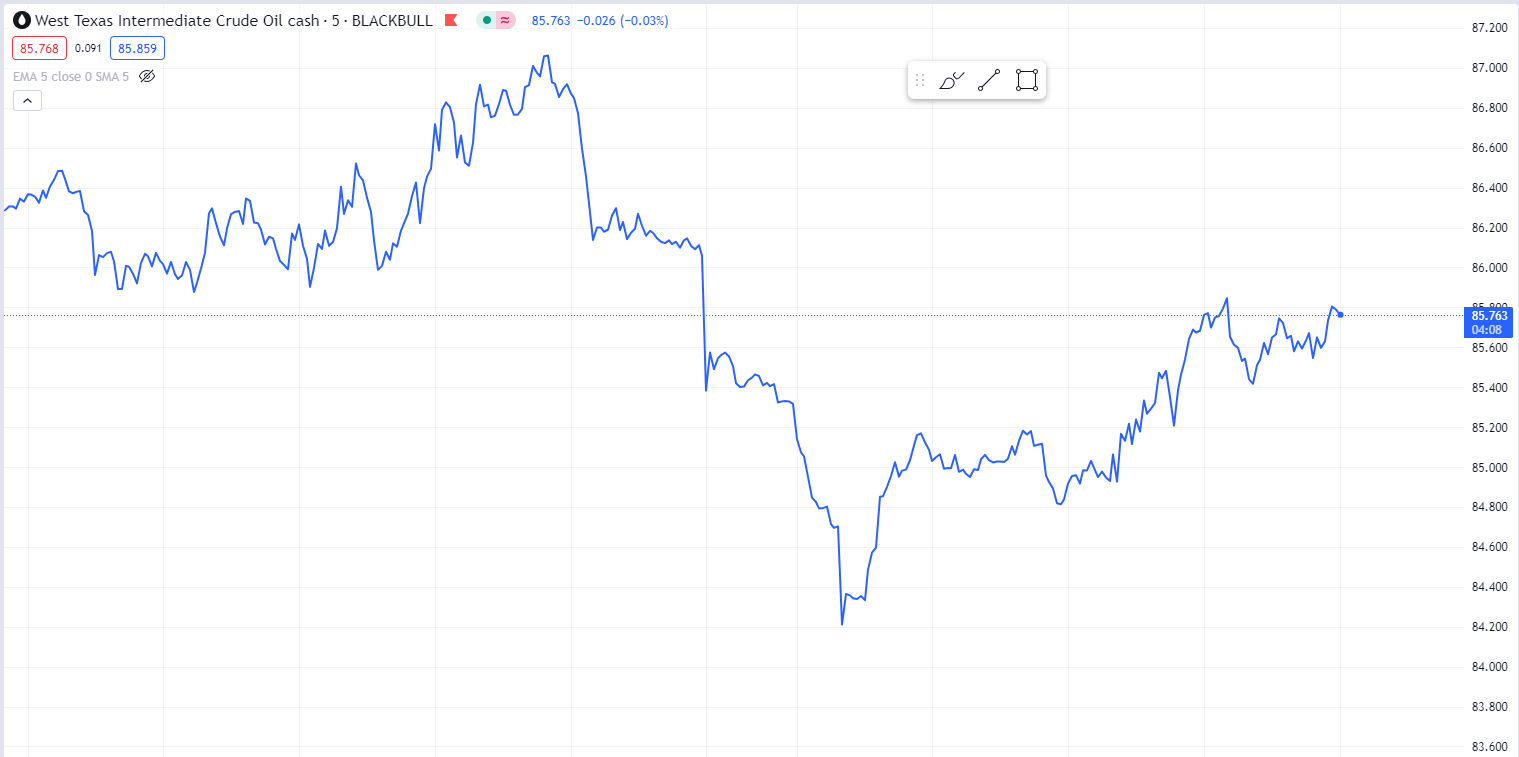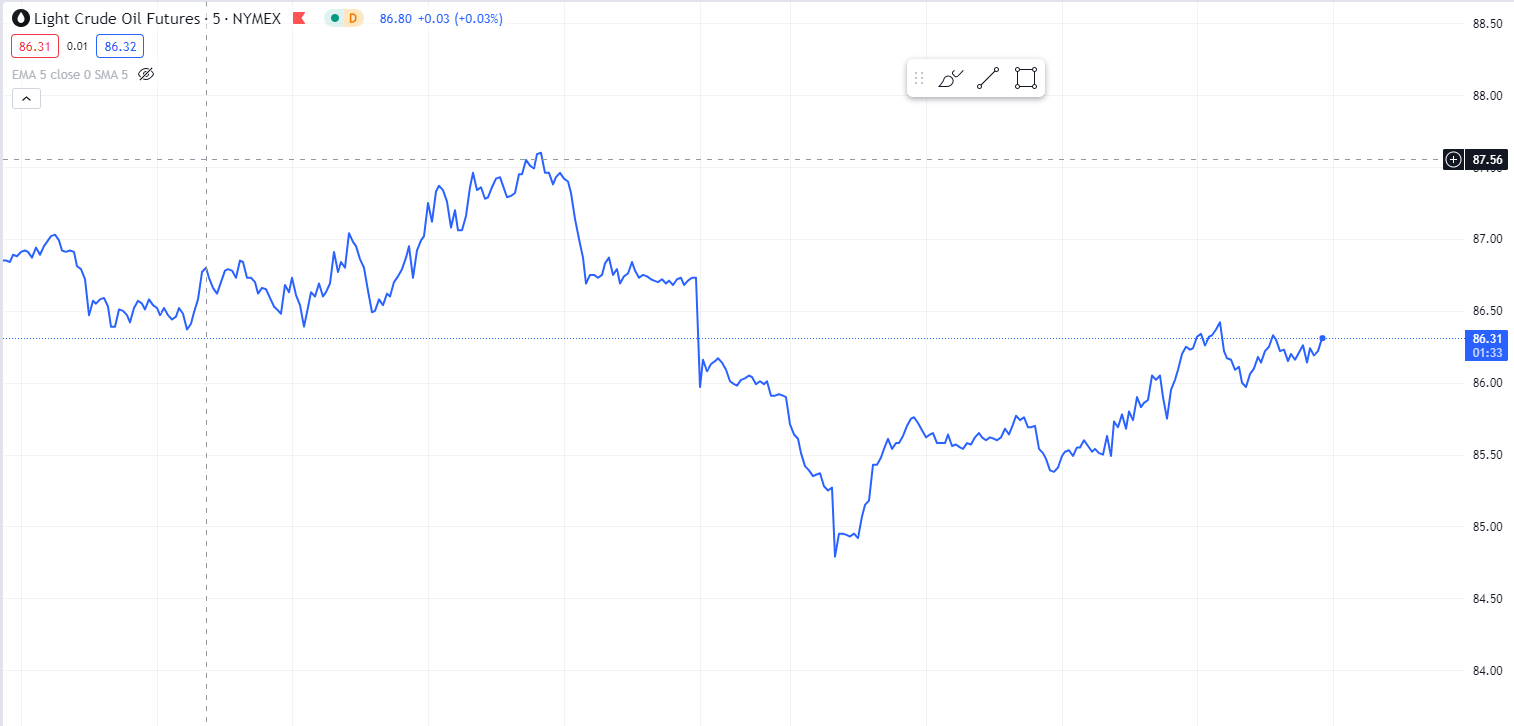What is the current oil price today?
WTI futures were priced at $81.33 per barrel as of 9 a.m. Eastern Time. So far this year, WTI prices have increased by 10.74%.
Brent futures were trading at approximately $85.69 per barrel, marking a decrease of 1.34% over the past 24 hours. Year to date, Brent prices have risen by 8.39%.
“Current Price of West Texas Intermediate (WTI) Crude Oil”
WTI futures dropped by 1.45% to $81.33 per barrel, as of 9 a.m. Eastern Time.

Over the course of 2024, West Texas Intermediate prices have shown a downward trend, yet they have seen a notable increase of 36.00% over the last three years.
On May 3, 2023, WTI crude hit its lowest point in the past 52 weeks at $64.00 per barrel. Conversely, it reached its highest point in the same period on September 27, 2023, peaking at $95.52. This high is approximately 14.86% higher than the current futures price.
Crude oil price chart

Brent crude oil typically experiences similar market dynamics as WTI crude, resulting in long-term price trends that closely mirror each other.
In July 2008, Brent crude oil prices soared to a record high of $147.50 per barrel during the peak of the oil market boom. In contrast, WTI futures contracts plummeted to an unprecedented low of negative $40 per barrel on April 20, 2020, primarily due to the COVID-19 pandemic causing a shortage of storage options in the United States. On that same day, Brent futures contracts remained positive, hitting a low of approximately $25 per barrel.
On May 3, 2023, Brent crude experienced its lowest point within the past 52 weeks, reaching $68.20 per barrel. Its highest point during that period occurred on September 27, 2023, at $96.62 per barrel. This high represents a marginal increase of 0.11% compared to the current futures price.
What is crude oil?
Crude oil holds immense significance globally, serving as a vital energy source and a fundamental ingredient in the production of various goods such as plastics and chemicals. In the United States, nearly all domestically produced or imported crude oil undergoes refinement to yield essential petroleum products like gasoline, diesel fuel, and heating oil.
The pricing dynamics of U.S. WTI crude oil and international Brent crude oil are subject to diverse factors that influence the equilibrium between market supply and demand.
Domestically, weather conditions in the U.S. can notably impact short-term demand for heating oil and natural gas, consequently affecting crude oil prices.
Globally, natural disasters and geopolitical tensions have the potential to disrupt production, leading to shortages in oil supply. Additionally, fluctuations in the U.S. and global economies play a significant role, with heightened industrial energy demands during periods of economic expansion and decreased demands during downturns. Moreover, the Organization of the Petroleum Exporting Countries (OPEC) wields considerable influence over global crude oil supplies through decisions to increase or decrease production levels.
WTI
WTI crude, short for West Texas Intermediate crude, comprises a blend of oils sourced from oilfields across the United States, notably in Texas, North Dakota, and Louisiana. This blend is then transported to Cushing, Oklahoma, for further processing and distribution.
Characterized by its American Petroleum Institute (API) gravity of 39.6 degrees, WTI crude is categorized as "light" oil. Additionally, WTI boasts a low sulfur content of only 0.24%, earning it the designation of "sweet" crude. These attributes render WTI crude highly desirable in the trading market.
Traditionally, WTI crude oil serves as the primary benchmark for determining U.S. oil prices within the global trading sphere.
Brent crude
Brent crude is a type of oil characterized by its sweet and light properties, derived from a blend of oils extracted from the North Sea region near Europe.
Sourced from oil fields including Brent, Ekofisk, Forties, and Oseberg, Brent crude boasts an API gravity of 38 degrees and a sulfur content of 0.4%. Compared to WTI crude, Brent is slightly heavier and less sweet. Despite these differences, Brent crude serves as a significant benchmark for international oil markets, particularly in regions such as the Middle East, Europe, and Africa.
Read more such news on techinsighttoday
Thank you so much for reading.

